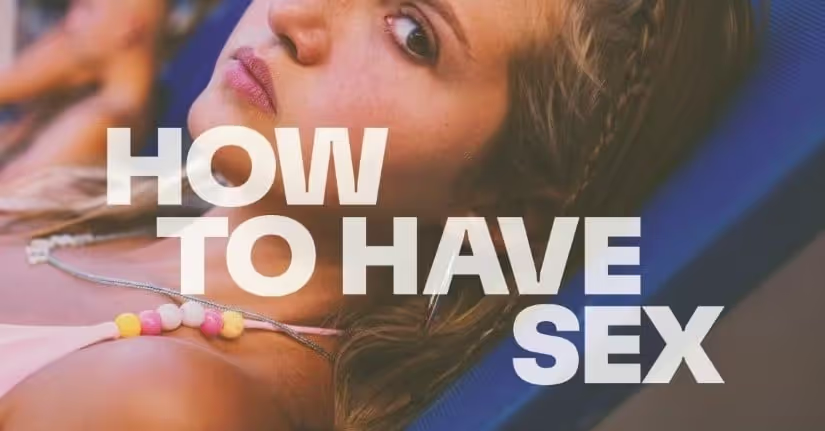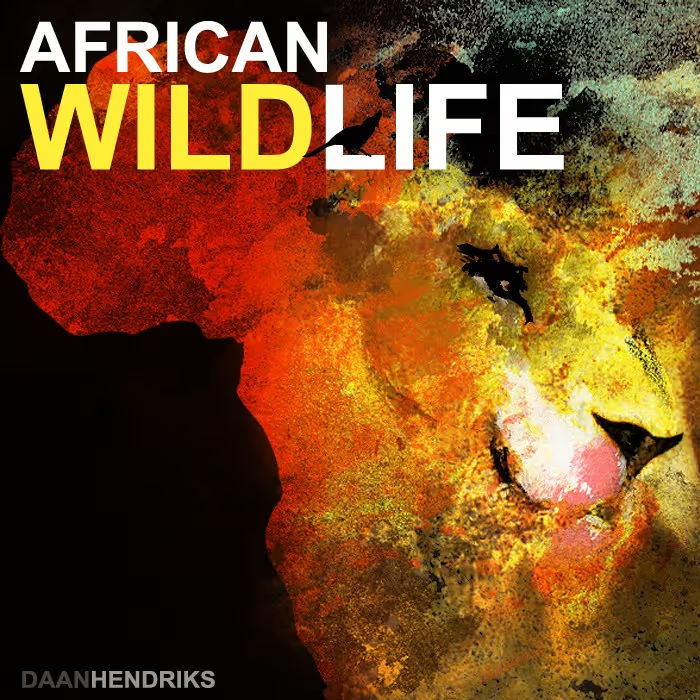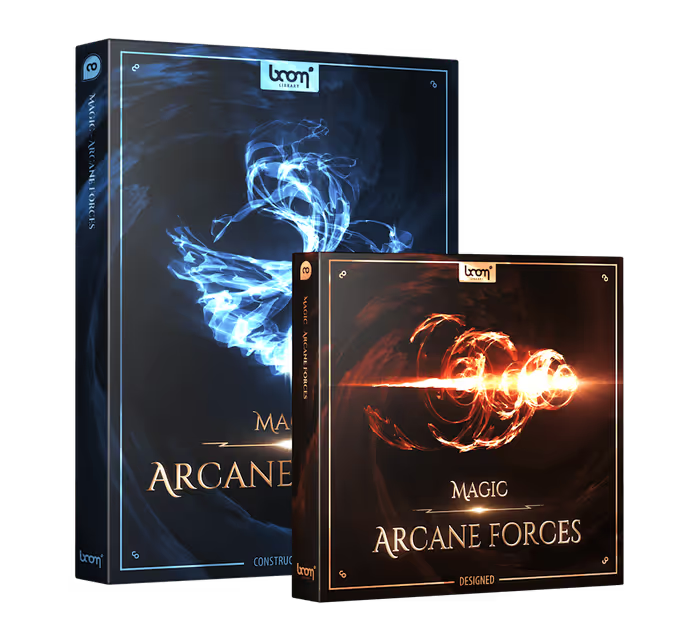Director Molly Manning Walker’s How to Have Sex is an official selection for Sundance 2024’s Spotlight program. The film follows three British teenage girls on a rite-of-passage holiday – drinking, clubbing, and hooking up in what should be the best summer of their lives. As they dance their way across the sun-drenched streets of Malia, they find themselves navigating the complexities of sex, consent, and self-discovery.
For Steve Fanagan – award-winning re-recording mixer/sound designer/supervising sound editor – the key to crafting the sound of How to Have Sex was all about creating chaos and then carefully controlling it to guide the audience through the ebbs and flows of partying and regret. Here, he talks about how he created endless 24-hour parties offscreen, how he was able to play several music tracks simultaneously to create a manic party-vibe, how he used nature sounds to reflect the emotional state of protagonist Tara, and much more!
HOW TO HAVE SEX | Official Trailer
When did you get involved with How to Have Sex, and what were some of Director Molly Manning Walker’s initial ideas for how to use sound to tell this story?
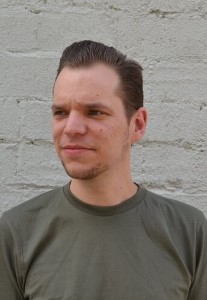
Steve Fanagan (SF): I was first contacted by one of the producers, Emily Leo, while they were shooting. They were interested in talking about the sound post and figuring out how they were going to do it.
After my initial conversation with Emily, I was sent a script and the “director’s deck” for the film. It was amazing to get to read the script at that point, to get a sense of the world, and to see what inspired Molly to write the film – to get a feel for how she was going to approach a story that is very real. The experience is quite universal, in terms of a group of teenage friends going on a holiday after school exams and partying hard, but her representation of it was going to be personal, authentic, and non-judgmental, which I was very excited about.
As they were nearing the end of the shoot, I got to have a video call with Molly, Emily, and Ivana MacKinnion (producer). Honestly, I have no idea how they fit the call in at that point, but we had a really good chat and we talked about what I thought I was seeing and hearing in the script. Thankfully, they felt we were on the same page creatively and we got to develop the work from there. They were very clear that they wanted sound to start early and to work in parallel with the picture edit, which is always an ideal scenario for me.
We discussed the two main moods of the film. There’s the initial excitement and euphoria of going on one of these holidays for the first time and landing in a place you’ve never been; of being the master of your own destiny. The three central characters are best friends and they’re there to party and have a good time, to have the “Best Holiday Ever!” Tara, our main character, is also there to try to have sex for the first time. So, there’s an excitement and a bravado to the opening. You are in a strange place where you can do anything you want, you don’t have to sleep if you don’t want to, you can drink as much as you like, and you can party as hard as you want. You are away from home, from your normal life and you can feel a freedom to explore your new environment and all that it has to offer. That’s the very euphoric, exciting, and electric initial mood in the film. There is also an amount of subtle, very real peer pressure at play from the people and the place.
We have to get inside her head and experience that world and that space from a different perspective.
As the story unfolds, Tara has a traumatic experience and she gets lost in the world a little bit as she struggles to process it. Her friends continue to party and she tries, but struggles, to keep up with them regardless of what’s happened. So, at that point, there’s a bit of a fork in the road where things get more subjective and more personal. We have to get inside her head and experience that world and that space from a different perspective. The performances in the film are incredible and gave us so much opportunity to explore this with sound.
It’s treated in a very real way by Molly – because you’ve had a bad experience doesn’t mean that everything turns bad. So this character is determined to still have a good time while she’s also processing this terrible thing that she’s not even sure about. It feels like a very honest and raw portrayal of trauma and how we deal with it. It’s not one note, the mood and experiences shift as she tries to come to terms with things, in a world that keeps moving around her.
So, from a sound point of view, there was a lot to work with. The setting itself – Malia – it’s a party town. Very early on, Molly had this idea that no matter what time of day it is, no matter where we are, there’s always a party going on somewhere. So, the sound had to reflect that realism. For instance, if our characters are waking up hungover, there’s probably a party two apartments down, or on a balcony outside, and there’s an all-night club that’s still open and the bass is still banging out of it.
I’ve heard the composer James Jacob talk about the music being like a monster that grows in the movie.
That musical element became very much a part of the world – this idea that if you’re having a good time in one of those places, there’s always a party to go to. And maybe if you’re having less of a good time, then that can become quite an overbearing presence; you can’t escape the partying happening around you at all times of the day.
I’ve heard the composer James Jacob talk about the music being like a monster that grows in the movie. It’s ever-present and it gets in under your skin. Depending on your mood, that’s either a good or a bad thing. His score and other music work for the film, as well as Molly’s use of needle drops, was invaluable in helping to express this.
The other thing you’d have in a place like this (with constant 24-hour parties) is the sound of people partying. It’s not just music. You’ve got shouting, roaring; people shouting across balconies at each other. You’ve got people outside of nightclubs, sometimes having fun, sometimes having fights. It’s all that realness that goes with a clubbing holiday.
Another thing Molly talked about really early on was that in Malia people rent quad bikes. At all times of the day and night, people are flying around the place on these quad bikes. They are noisy and that noise can be heard echoing everywhere at night from The Strip, to the beach, to the apartment complexes. It can have quite an aggressive, imposing energy and we’ve used it as a motif throughout. We created some of our subjective sound design material from these bike recordings to underscore that, too.
Along with the quad bikes, the shouting and roaring of the streets, the music, and the sea nearby, we’ve also got quite intense crickets and cicadas…
Along with the quad bikes, the shouting and roaring of the streets, the music, and the sea nearby, we’ve also got quite intense crickets and cicadas because of the summer heat. So the environment gets to be this cacophonic, intense, ever-living and breathing space. Molly was really interested in that and some of the real clips and TikToks that she shared with me illustrated this and gave us something to aim for. How we used these sounds was very much based on our character’s point of view, we speed them up and raise the pitch in the more intense parts of the film and calm them down or take them out for contrast elsewhere.
Our starting point was figuring out how to create something very alive and very full of different sounds at different times of the day, to keep the party going wherever we were – whether it was down the road or it was right in front of us – and to see what that did and how that placed our characters in that setting, sometimes it’s energizing, freeing and euphoric, sometimes it’s overwhelming, isolating and oppressive.
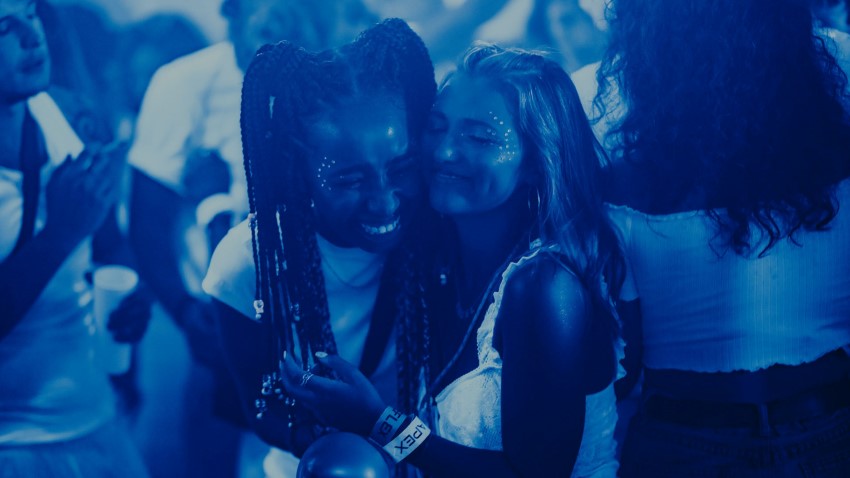
You’re building 24-hour crowds and party crowds. Did that require a lot of loop group? Were you able to go out to clubs and capture some crowd ambience?
SF: We did a couple of things. We worked with this amazing group called Inspire Academy – a London-based acting academy. We worked with a group of 10 young actors for our crowd session and they are trained in improv so they were brilliant at giving us that energy we needed. Molly directed this session and had written material and prompts for it and the actors gave us some wonderful stuff, performed both to picture and wild, that we used throughout the film. It was a really fun, creative session to be part of.
Another element came from recordings I captured in Dublin outside of some hectic nightclubs. I spent a few nights over a Bank Holiday weekend recording around the city center outside clubs, pubs, and on the streets mostly around closing time. These recordings gave us some of that messy “on-the-street” realism to work into our backgrounds.
…we were also looking for the slap of the street as someone shouts at someone down the road – that acoustic.
We also used a really nice library from If a Tree Falls called Nightlife. He’s done a London nightlife library that has great stuff from outside nightclubs.
We were looking for more than just the roaring excitement, fun, and messiness of those nights; we were also looking for the slap of the street as someone shouts at someone down the road – that acoustic. So, those libraries and some of the recordings I got were really helpful for that part of the sound experience.
These different elements allowed us to constantly place voices in different perspectives. For instance, when the girls are in their apartment, you could have some voices coming from a balcony across the way, or from down by the pool. That helps to build this immersive 360-degree space in which all of that activity and energy is always happening.
…we put together this chaotic, messy group of teenagers landing in an airplane about to go on the holiday of a lifetime…
Part of Molly’s research that she shared with me were these TikTok videos with footage of a plane load of teenagers landing at a holiday resort airport; they’re standing up, singing, chanting, shouting, and pogoing – just this chaos, this really energetic, vibrant chaos that feels emblematic of this type of holiday. So, for the opening of the film, while the logos are playing, before we get to the first frame of the actual picture, we worked with the loop group to mimic that chaotic atmosphere on the airplane. Additionally, we had one of our voice actors do an airplane announcement and we put together this chaotic, messy group of teenagers landing in an airplane about to go on the holiday of a lifetime in Malia with our main characters in there, too. It felt like a good way to get our audience into the world of the film quickly.
That energy was really important to Molly and it was great fun recording with the loop group and capturing source material for it. That energy is the essence of these places and it became a sonic identifier for us for this holiday.
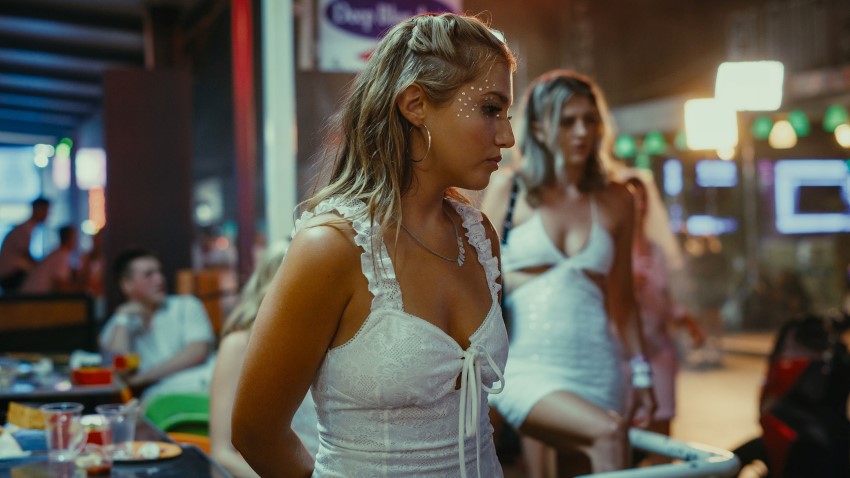
And because it’s Malia, was it ok to use recordings and loop group that were mainly English-speaking?
SF: Absolutely. Many of those holiday spots are visited by British and Irish tourists. It’s much more of a party town, so there’d be a lot of English, Irish, Scottish, and Welsh school and college kids who go there on these holidays.
On The Strip, we had a mixture of different voices, but at the same time, it would predominantly be people speaking English…
Because our main cast of characters are English and they were staying in a resort that would be a predominantly English/UK holiday destination, that felt appropriate.
On The Strip, we had a mixture of different voices, but at the same time, it would predominantly be people speaking English – people from the UK or Ireland. It’s an interesting anomaly that I suppose, in an American context, might be like Spring Break in Cancun where it’s much less frequented by the locals and much more about American college kids.
 Tesla Model X 2015 electric full size crossover SUV sport utility vehicleKrampfstadt Studio65,00 $32,00 $51% OFF
Tesla Model X 2015 electric full size crossover SUV sport utility vehicleKrampfstadt Studio65,00 $32,00 $51% OFF
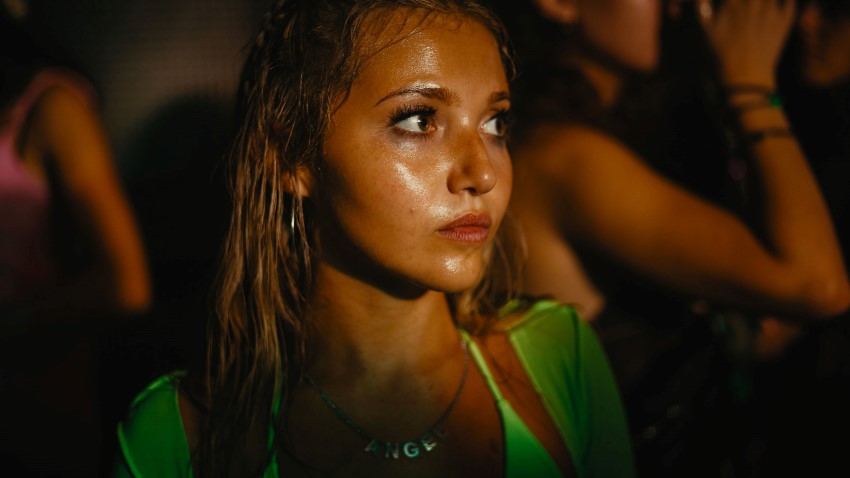
As the mood goes from partying and having fun to more introspective, how does the sound shift to reflect that?
SF: The sound works in conjunction with the way the film is shot and edited, and the way that the score and music are working. It’s mostly shot handheld so it feels very vérité and documentary-style (it’s not, though, it’s very thought out, structured, and planned to feel this way).
There are very few wide shots – less than a handful – so we’re generally close to our characters and we’re reading body language, expression, and the simplest movements of someone’s eyes. Tara, the main character who goes through this traumatic experience, does an awful lot with her face that communicates what’s going on inside for her. So to have that as an anchor for what we could do sonically was brilliant.
By subtly changing what we were doing with the crowds and that ambience in the second half of the film, we were able to give it more of an edge…
There were lots of very simple, subtle, subconscious things we were trying to do with the sound as her experience deteriorates. For instance, the cricket chirps get faster. The music gets bassier. The rowdiness gets more threatening than fun. (If you’re outside a nightclub as it’s letting out, some people are having fun but some people might be more aggressive and are not the people you’d want to spend time with.) By subtly changing what we were doing with the crowds and that ambience in the second half of the film, we were able to give it more of an edge, a bit more of a threat, so that the character (and hopefully the audience through her experience) feels more isolated.
Mia, who plays Tara, was brilliant at ADR (as were all of the cast!) and was really up for trying things, so we got to record some invaluable breath material with her. We tried to match the visuals and get close to her and focus in on that. It’s that thing where if you can hear someone’s breath, you realize how close you are to them. So if you’re attempting to subjectively go inside someone’s head, it can be a great way in. You get close enough to hear their breath and then you move inside their head and start to hear the world as they’re hearing it.
…if you can hear someone’s breath, you realize how close you are to them.
There’s a moment after the initial assault when she’s out on The Strip, and it’s noisy and chaotic. It’s late at night so there are rowdy people all around her and quad bikes going by. We slowly focus in on her footsteps and her breath, and we’re able to go into an experience where she’s not even really hearing that chaos, it gets duller and heavier around her. We can pull all of that reality away and move into her headspace as she tries to process what has just happened.
One of the lovely things that Molly’s doing throughout the film is juxtaposing that with the party atmosphere. So we go from an interior moment and hard cut to her on a dance floor in a nightclub, trying to shake it off. By having that constant ebb and flow and juxtaposition in terms of how the story is told and structured with the writing, the direction, and the editing, we’re able to play with that subjectivity in the sound work in a really nice way.
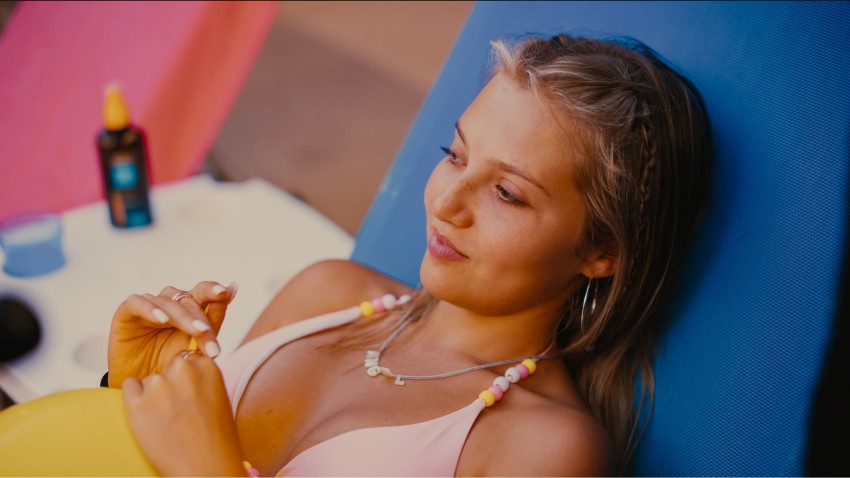
The mixing stage of post-sound can be as creative as sound editorial. What were some creative decisions you made on the dub stage? What were some different options you tried and how did they change the experience of the film?
SF: We did a couple of temps on this before getting to pre-mix and final, which was great in terms of trying things out. We got to experiment early on with a lot of that subjectivity that we were thinking about.
There are times when…there’s music coming from three or four sources at once.
Music is such a massive part of the film. There are times when we’re out on the street, on The Strip outside the nightclubs, and maybe there’s music coming from three or four sources at once. Molly wanted it to be chaotic and I completely understood what she meant. Still, the mixer in me was thinking, “I wonder how we’re going to make that work. How do we have three or four tracks playing at the same time, coming from different locations, with potentially different rhythms, pitches, and melodies? How is that going to sound? How is that going to work around our dialogue? Or work around any number of other things that are happening?”
So getting to experiment with that early on, trying to figure out how to spatialize and play with those sources so we perceive them as coming from different places as our characters would, was really important. Getting to audition these for Molly early on and getting her thoughts helped us evolve this idea over time.
The sound of The Strip, or the sound of the party at the pool, or the sound of being in the middle of a nightclub is quite chaotic. But at the same time, you’re trying to figure out how to focus sound-wise for the audience, so that they know what’s important and know how we’re situating them in the story. Getting to experiment with that early on, getting Molly’s feedback, and then developing it throughout the process with her was invaluable.
…you’re trying to figure out how to focus sound-wise for the audience, so that they know what’s important…
Something else that was unique on this film was that the composer wrote a collection of really great club and party tracks and gave them to us as a folder of “bangers.” He has a background as a music producer and as a DJ. So, he was the perfect person to do the score for this, but also to come up with source material for the various clubs and other places that music was pouring out of throughout the film. We had a folder of 20-plus tracks from him that we could place anywhere in the film that we liked. Again, getting to experiment with that and seeing how those things played off each other – figuring out how to situate our audience inside the experience from our character’s point of view – was really important. A big part of the mixing was the placement and the spatialization of that material.
We also did something else that I haven’t done on other films. Because this is shot in such a vérité way, we have scenes with three or four people (or even six or eight people) and there’s lots of bravado and lots of overlapping dialogue. Overlaps are always a tricky thing with dialogue, but in this film, we had to embrace that and figure out how to make it work best. It was a vital part of the energy of it all.
Overlaps are always a tricky thing with dialogue, but in this film, we had to embrace that…
And so when we were trying to fill in some of the spaces to keep the party going offscreen – for instance, when our characters move from a party to a side room – it had to feel like production sound for the party continuing offscreen without them.
We were able to do a session of crowd with our cast. So, we had our 6 main actors together to perform – in twos, threes, fours, fives and sixes – to fill that out. That’s something I hadn’t done on a film before, but it was invaluable for this one. Molly was able to write for and direct that cast crowd session and the actors really bought into it and we got some wonderful material and performances.
As we were mixing, we were able to experiment with how to use that material, how to spatialize it, and how to situate it around our characters so that it felt like the party they were adjacent to was still happening and with voices and subject matter we recognised. We got to record things in that session that were entirely specific to those moments, which hopefully helped it feel real. It was a lovely tool to have, to be able to pull those into the mix and play around with them.
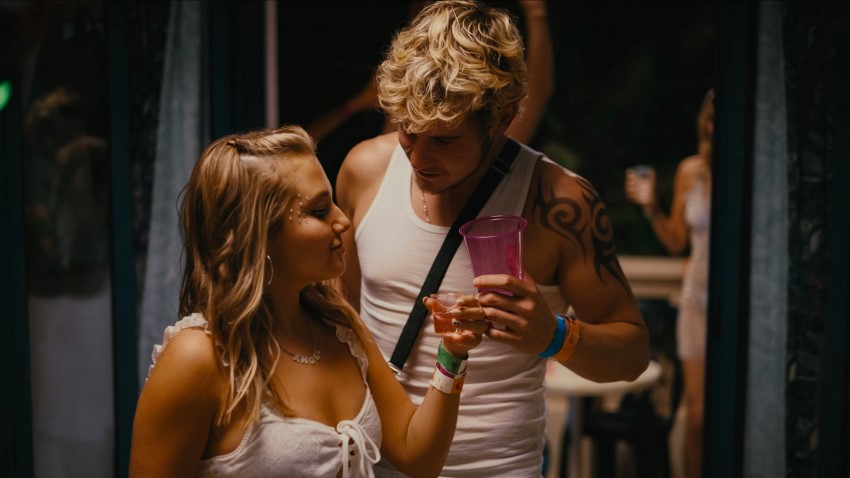
Were you really going for it in the mix with hard pans on the different music sources? So, panning one source of music hard left front and moving that to left side as the characters walked past a club?
SF: Exactly. We’d pick a spot where one track was coming from – like, left front – and another one would be right side, and then figure out a treatment that allowed each to have some reflection in the other speakers. It was really fun to figure out all of that detail.
It felt like working with ambiences and figuring out how to make something immersive and inescapable; we are always surrounded by a party happening somewhere. In this case, though, the ambiences had music and voices in them. We were trying to build up this fully immersive 360-degree space with chaotic elements – very pointedly figuring out where they were coming from and how they would interact in the environment.
We were trying to build up this fully immersive 360-degree space with chaotic elements – very pointedly figuring out where they were coming from and how they would interact in the environment.
If you have a number of pieces of music playing at once, one could be coming from a club way down the road so all you’re hearing is the really low-end pulse. Another could be coming from a karaoke bar, so it’s a little bit more treble-y and a little bit messier. Or, it could be music coming from a street vendor’s Bluetooth speaker. So thinking about the type of speaker that the music was coming through and then thinking about where in the space our character is and where the music was originating from in relation to them really helped us. It was a very different kind of a mix from that point of view and a really enjoyable challenge.
We did that with our group ambience as well. Our characters are in the middle of whatever is happening on screen so as we’re painting the 3D image of the party in the next room, and the party down the hall, and the party in the apartment across the way; we’re picking locations where we felt those voices were coming from, and allowing enough space for our main dialogue to not be interfered with. But, we wanted to have as much activity and chaos around us as possible to be true to that kind of holiday experience.
…we wanted to have as much activity and chaos around us as possible to be true to that kind of holiday experience.
There’s something that always happens when you’re mixing where you realize that in a real-life situation, you are maybe aware of an environment when you first enter it, but as you spend time in that environment, the sounds drift away a little bit so that you can focus on what’s right in front of you. So to be able to use that as a mix technique felt great; we could land somewhere and it could be quite chaotic initially, but as we focused in on our character(s) experience in the moment, all of that extra stuff could drift off a little bit into the background yet still be present without being disruptive to intelligibility or being too distracting from the emotional heart of the film.
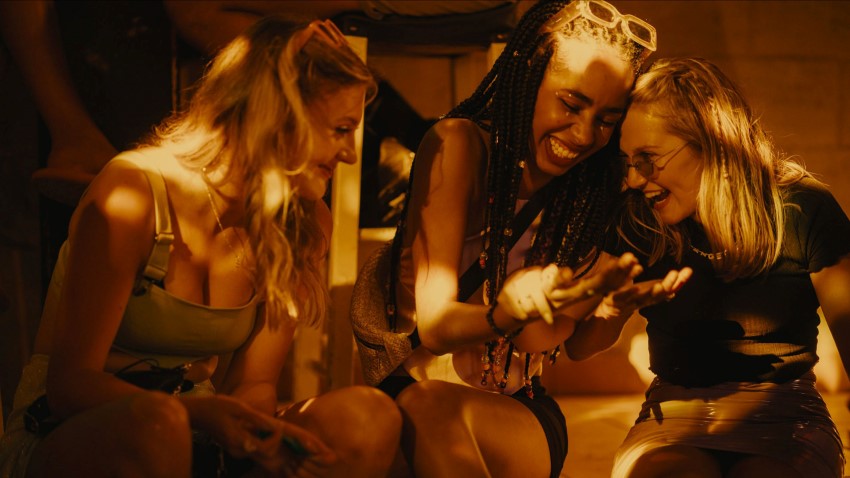
What format did you mix in? And where did you mix the film?
SF: We mixed in 5.1. It’s a format that I love and it’s a format that most indie films are going to be presented in theatrically. So it was great to be able to work in that format and push it to its limits to make a dynamic and immersive theatrical experience.
We mixed in 5.1…So it was great to be able to work in that format and push it to its limits…
For this film, sound post was mostly done in Belgium. I was working in Ireland but the rest of the sound team was in Belgium. There’s a company called Aquarium Belgium. They also have Aquarium London and I had worked with them in their London capacity in the past. It was lovely to get to collaborate with them again and this time in Brussels with the Belgian producers Umedia.
We mixed at a facility called Studio L’Equipe. We worked in one of their theatrical mix stages; it’s a lovely, large, well-maintained, great-sounding mix room. We worked in the box on an Avid S6. I pre-mixed from my studio in Dublin before going to Belgium for the final. It was an interesting process and a new one for me – one that I hope I get to do again.
What was unique about your experience of working on How to Have Sex? Or what did you learn about your sound craft while working on this film?
SF: It’s a really beautiful film, and it’s a very sensitively told story. It’s incredible when you get to work with someone like Molly, who’s a first-time feature director, and a first-time feature writer, and they seem to appear on the world stage fully formed. It was just a wonderful experience from that point of view. She is a true talent and was so lovely and generous to work with. The subject matter and the sensitivity with which it looks at issues of consent – it looks at how we’ve all learned to incorrectly think about sex – is so sensitively done and incredibly enlightening. Molly made something that I think people have taken a lot from.
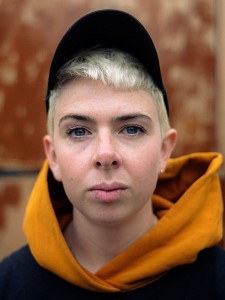
From that point of view, I feel incredibly lucky and it was a real privilege to get to collaborate with her on it. I feel like we got to work very closely together across a good amount of time and it was great to be part of that process early on with Molly and her editor Fin Oates, who was totally brilliant to work with, too. It’s always great to do preliminary sound work as they’re cutting picture, to work on scenes they’re worried about, and to find our way into the film soundwise together as they’re approaching lock.
From a craft point of view, it was a lovely experience to work with a sound team I hadn’t worked with before to see the expertise that’s out there in the world, and to collaborate with people from different countries. And to final mix in a place I’d never been before – to be looked after by the facility and the mix techs. We were up against a very real deadline for the film’s Cannes premiere but we didn’t let that get in the way of our process or collaboration; we explored the film’s sound as if all that mattered was getting things right and exploring all of our ideas together. Molly’s great notes and clear decision-making were integral to this.
We were up against a very real deadline for the film’s Cannes premiere but we didn’t let that get in the way of our process or collaboration…
For me, there was something very cathartic about it. When you’re working on a film with heavy subject material, it’s hard to take it all in, to process it. You emotionally engage with everything you work on, and this film affected me deeply in lots of ways. To see it go out into the world and be so well-received has been incredible. I feel very lucky to have played a small part in it with such a talented group of people.
Sound post crew:
Supervising Sound Editor, Sound Designer, Re-recording Mixer: Steve Fanagan
Dialogue and ADR Editor: Levi Mercurio
Additional Dialogue Editing: Adrien Vinas
Foley Mixer: Joachim Glaude
Foley Artist: Elias Vervecken
ADR Mixers: Alistair Bolt, Jack Wesley, James Treason, Kevin Robertson
Mix Technicians: Kyle Masterson Silvestro, Bastien Strofft
Audio Post Producer: Sean O’Shea
Sound Post Production at Aquarium, Belguim
A big thanks to Steve Fanagan for giving us a behind-the-scenes look at the sound of How to Have Sex and to Jennifer Walden for the interview!
 Tesla Model X 2015 electric full size crossover SUV sport utility vehicleKrampfstadt Studio65,00 $32,00 $51% OFF
Tesla Model X 2015 electric full size crossover SUV sport utility vehicleKrampfstadt Studio65,00 $32,00 $51% OFF

